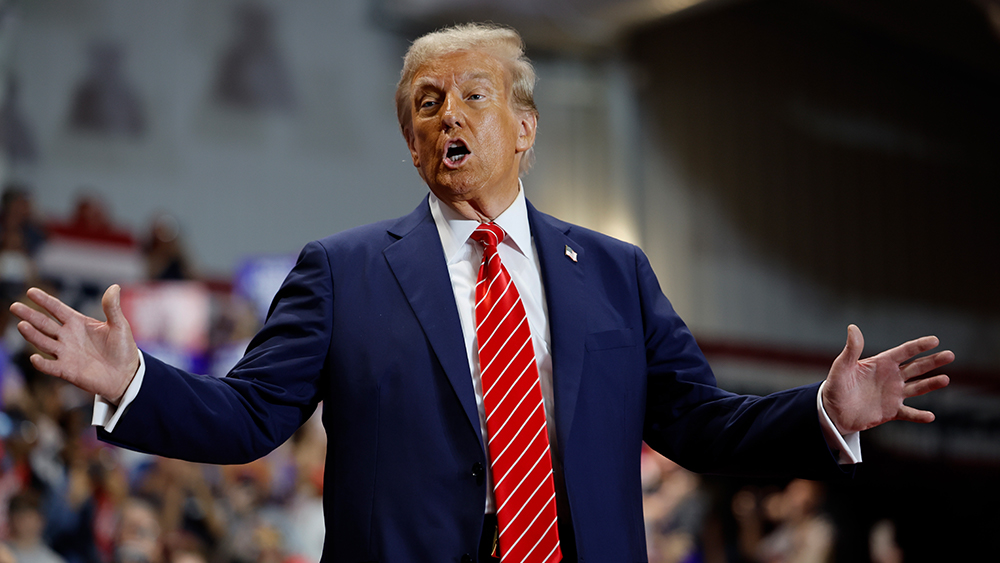
Taiwan's IDS Program seeks to double Taiwan's existing fleet of four aging submarines. The $16 billion program was launched in 2016 when the Taiwanese government partnered with Taiwanese shipbuilder, the China Shipbuilding Corporation.
The IDS program was envisioned at a time when the island nation was having trouble getting submarines and critical components from other countries, many of whom did not want to upset China by supplying Taiwan with defensive material. (Related: Taiwan to extend mandatory military service period amid rising tensions with China.)
"There are instances where we spent around half a year working toward a deal, and the partner withdrew at the moment right before the contract was signed, i.e. a last-minute withdrawal due to political pressure [from China]," Huang said.
Fortunately for Taiwan, the United States was willing to support the nation despite the fact that the country already stopped making the kinds of submarines Taiwan wanted to launch. In the final days of the presidency of former President Donald Trump, he approved an $18 billion arms sale to Taiwan, which included the sale of advanced weapons technology.
Moreover, the Trump administration also granted export permits in December 2020 and January 2021 for the important elements of the IDS project — digital sonar systems and integrated combat systems. Later on, the administration of President Joe Biden also approved the export of additional necessary equipment like periscopes for the same project.
And now, three years after the launch of the IDS project, Taiwan is ready to arm its diesel engine submarine with U.S.-based Lockheed Martin's MK-48 anti-submarine and anti-surface warfare torpedoes.
Taiwan continues building defense against China to deter potential invasion
China has been expanding its own naval fleet, and the People's Liberation Army Navy currently boasts an armada of over 50 submarines, including nuclear-powered ones. So, Taiwan needs to counter this increasing encirclement by investing heavily in submarines to deter any potential invasion attempts.
Huang stated that the island nation seeks to prevent the Chinese military from approaching the "first island chain," by the northeastern waters and the Bashi Channel, the passage between the Philippines' Mavulis Island and Taiwan's Orchid Island. This strategy would prolong the first attempt of attack, allowing other nations, including Japan, to extend their support to Taiwan.
Meanwhile, Huang predicted that China might seek support from Russia in the East China Sea to counter potential intervention by Japan and the United States.
"They will want to isolate Taiwan and finish off the invasion as soon as possible. Taiwan can't be surrounded by China from all sides. Otherwise, we'll be doomed," warned Huang.
Vice Admiral Karl Thomas, the commander of the U.S. Seventh Fleet, explained that the naval prowess of China has the potential to claim control and surround Taiwan, although he could not predict whether China would resort to a blockade or launch a full-fledged military attack.
Despite that, he reiterated the commitment of the U.S. to the security of Taiwan, pledging to respond to any threats or acts of aggression in the region. "Clearly, if they do something that's non-kinetic, which, you know, a blockade is less kinetic, then that allows the international community to weigh in and work together on how we're going to solve that challenge," Thomas stated.
Visit WWIII.news for more updates about the conflict between Taiwan and China.
Watch the video below that talks about the CCP deploying more warplanes over Taiwan.
This video is from the Chinese taking down EVIL CCP channel on Brighteon.com.
More related stories:
Domestic crisis may force China to invade Taiwan, lawmaker warns.
WWIII looms: Biden administration working on another PROXY WAR involving Taiwan and China.
China preparing to launch an invasion of Taiwan, warns Chinese journalist.
China will not hesitate to use FORCE to retake Taiwan, warns Xi.
China increases military budget to $224 BILLION in preparation for invasion of Taiwan.
Sources include:
Please contact us for more information.

















